Photos of Payette NF and Boise NF Destruction
We posted a letter [here] from Ned Pence, retired District Ranger on the Payette National Forest, reporting on his recent visit to the Krassel District. Over 470,000 acres of the Payette NF burned last year, part of an 800,000 acre holocaust that stretched across central Idaho and three national forests.
Mr. Pence was kind enough to send some photos of the destruction, along with this note:
These are examples of some 200 pictures we took of the results from WFU in 2006 and 2007. Two show the non-maintenance of the former Krassel Ranger Station now a “work center”.
The sedimentation of the South Fork of the Salmon River far exceeds anything that resulted in the logging that Regional Forester Vern Hamre stopped in 1967. If sedimentation from logging damaged spawning habitat for summer run Chinook salmon, the damage from WFU will eliminate the salmon from the SFSR. It will take decades for the sediment to flush out without another catastrophic fire. Please think about the fuel loading that will exist in 20 years when the fire killed timber is on the ground with dog hair regeneration. The second fire will be more intense than the first. Recovery of the SFSR will not occur in my lifetime, probably not in my son’s lifetime.
To allow a lightning fire started in July or August with the current fuel loading is not “natural” or “wise use”. It is abuse. There are better ways of returning to “natural” if that is the objective.
Unfortunately, we must recognize that the Forest Service we loved no longer exists and probably never will. And I feel very bad about that.
Ned
To view the photos click the “Read more” link below.
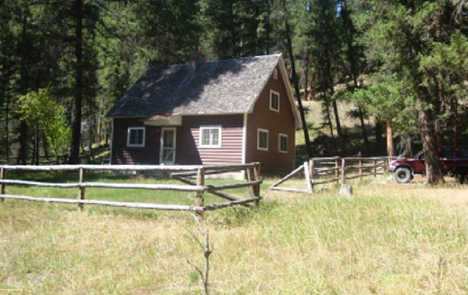
Historical Krassel ranger’s house not maintained on the Payette National Forest
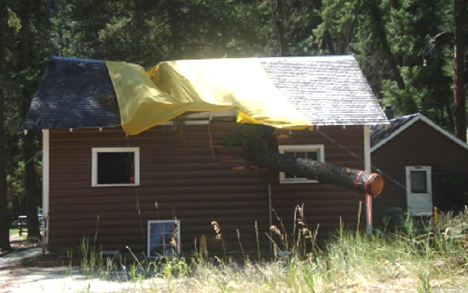
Historical equipment shed on the Payette National Forest not repaired
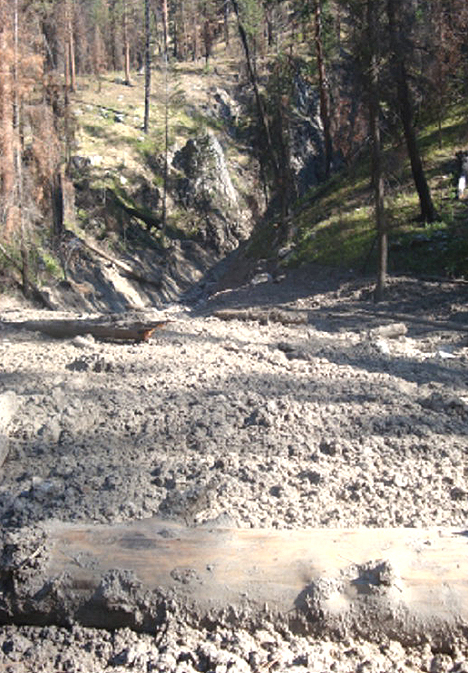
Blown out draw caused by the 2007 burn on the East Fork of the SF Salmon River on the Payette National Forest
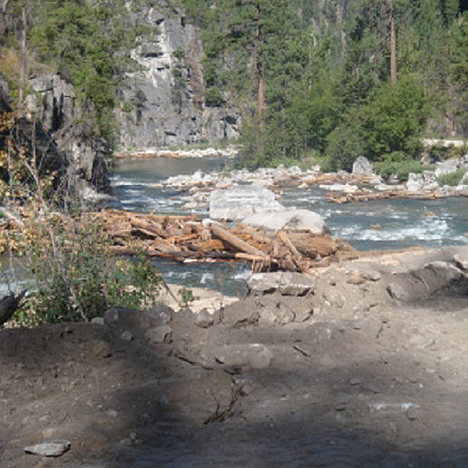
Log jam and sediment on the East Fork of the SF Salmon River on the Payette National Forest caused by the 2007 burn
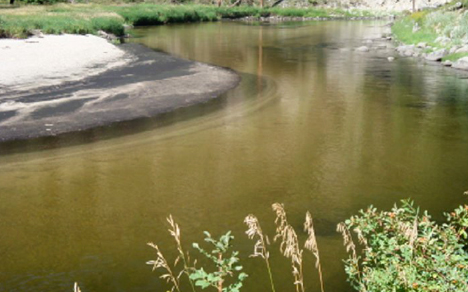
Krassel Hole on the SFSR in the Payette National Forest showing sedimentation and charcoal from the 2007 fires.
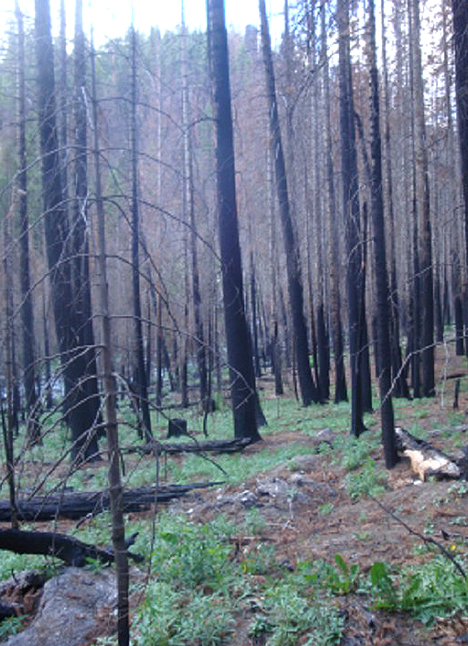
2007 burn along the Secesh River on the Payette National Forest
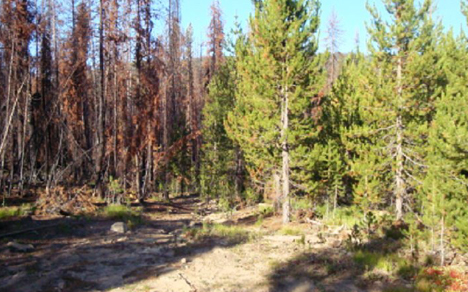
2006 burn on the Boise National Forest stopped by a former timber sale on the 1970’s
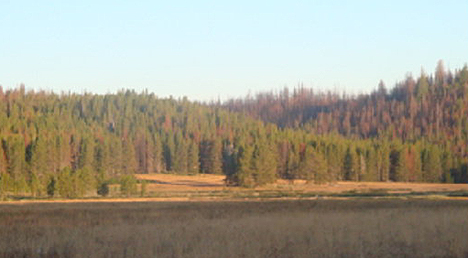
The 2006 burn and dying forest near Bear Valley Creek on the Boise National Forest
by Bob Z.
The situation is sad. My brother Carl and I wrote a book about what happened to the Forest Service during our forty year careers from 1960 to 2000. It is available by E-mail anpence@cpcinternet.com. We published it ourselves and it is available for $15 plus $5 for mailing and handling. We expect to cover our costs for computer software, hardware, ink and paper. We cover everything that happened in the agency that Pinchot established and still existed in 1960 to what happened during the Clinton years.
by YPmule
We live in Yellow Pine. We have seen fires that help the forest and we have seen some pretty bad fires close up and personal. I hope you don’t mind, but I have some photos to share. I also have collected several photos of the damage to the East Fork of the South Fork Salmon River from the July 2008 flash floods (after the 2007 fires).
The first 3 are photos of the same mountain during 3 different fire years.
2004 Van Meter prescribed burn (North of YP)
http://www.ruralnetwork.net/~yptimes/img11.jpg
2006 Van Meter fire (Lightning strike Aug 7th)
http://img118.imageshack.us/img118/8195/0001940agz1.jpg
2007 East Zone Fire on Van Meter
http://img211.imageshack.us/img211/7780/0002494aow8.jpg
The next two are what we see as Good Fire and Bad Fire:
Good Fire (west of YP back burn 2007)
http://img413.imageshack.us/img413/998/0002487bwx0.jpg
Bad Fire (south west of YP Monumental Fire 2007)
http://img395.imageshack.us/img395/8215/0002451avn4.jpg
Good pictures. The difference between what happened from logging and the fires is that the logging only affected a relatively small area of the total SFSR. Once the pressure was removed by closing all the roads necessary for the Idaho jammer logging, the river was able to flush out. The 2006 and 2007 fires have affected the whole SFSR and they are not done affecting it. The ground fuel loading will be substantial in twenty years when the fire-killed timber is on the ground and mixed with regeneration. The second fire will be much more intense than the first. The Forest Service has a significant problem from fuel loading that is not natural and fires that are not natural fires, and they do not have the tools or knowledge to handle the problem
For more photos of the destruction from the 2007 fires on the Payette NF see:
https://westinstenv.org/sosf/2008/06/08/some-payette-pics/
https://westinstenv.org/sosf/2008/06/08/more-2007-idaho-fire-aftermath-pics/
https://westinstenv.org/sosf/2008/06/09/lies-deceit-obfuscation-and-destruction/
by Joe B.
The sad thing about those photos is that you don’t have to leave your car to take them.
by YPmule
Photos of mudslides and debris flows on the East Fork of the South Fork of the Salmon River between Yellow Pine (Parks Creek) to the confluence with the South Fork Salmon River. It also impacted the water supply to the village of Yellow Pine.
(photos collected from USFS, news reports, locals)
EFSF Flash Flood July 22, 2008 (Zena Creek/East Zone Fire complex 2007)
One of the tributaries to the ESFS - Blow out
http://img378.imageshack.us/img378/4025/efsfblowoutkh2.jpg
Brown river
http://img378.imageshack.us/img378/1306/efsfbrownwaternm8.jpg
Debris flow across EFSFSR Road
http://img392.imageshack.us/img392/5406/efsfdebrisflowacrossefsax3.jpg
Debris flow across road into river
http://img378.imageshack.us/img378/3561/efsfdebrisflowacrossroalv6.jpg
Debris on road
http://img392.imageshack.us/img392/3079/efsfdebrisonroadau7.jpg
Frog Pond on EFSFSR road filled with mud
http://img392.imageshack.us/img392/969/efsffrogpondonefsfsrroabg7.jpg
Log Jam in River
http://img392.imageshack.us/img392/2947/efsflogjaminriverfk5.jpg
Reagan Creek (culvert was scheduled for replacement summer 2008)
http://img255.imageshack.us/img255/4746/efsfreagancrcw9.jpg
Reagan Creek blowout
http://img378.imageshack.us/img378/6046/efsfreagancreekyr1.jpg
East Fork road damage
http://img392.imageshack.us/img392/6064/efsfroaddamageef3.jpg
East Fork Road water/mud flow
http://img378.imageshack.us/img378/5629/efsfroadmudflownf7.jpg
East Fork Road washout
http://img378.imageshack.us/img378/4566/efsfroadwashoutip2.jpg
East Fork Road (from helicopter) road repairs
http://img392.imageshack.us/img392/8900/efsfsrroadmx3.jpg
Water backing up behind debris in the EFSFSR
http://img378.imageshack.us/img378/6230/efsfwaterbackingupbehinkb8.jpg
YP end of Parks Creek slide July 23, 2008 (extended 500 feet either side of Parks creek)
http://img378.imageshack.us/img378/4843/0002630anx6.jpg
KTVB news story about the slides:
http://www.ktvb.com/news/localnews/stories/ktvbn-jul2308-yellow_pine_mudslides.83dc52d9.html
The road was not passable until Aug 1st, and impacted the YP Harmonica Festival (again). A temporary bridge has been installed at Parks Creek, and final repairs put off until 2009 (which will close the road all next summer.)
What is most amazing to me is the non-reaction from those who were terribly upset over logging in the South Fork of the Salmon River (SFSR) in the 1960s and early 1970s. That criticism resulted in Regional Forester Vern Hamre stopping all logging in 1967. With a sale in the late 1970s that was also stopped, the management of the fuel loads (required inthe Land Management Plan approved in 1976) also stopped. Fuels management was ignored until the WFU policy was implemented. The WFU policy ignores the fact that fuel loading is far from “natural”. The Forest Service is not “managing fire to play its natural role” as they claim. Where is the NEPA requirement to consider cumulative effects? Where was the “public involvement? The WFU policy ignored NEPA!!
When I became District Ranger of the Krassel District in 1971 we had a large program to close the roads constructed for the Idaho jammer logging. Once the roads were closed the SFSR flushed itself out. When I left in 1975 the river had returned to near “natural” conditions. Salmon were spawning clear to the East Fork. On my recent trip I never saw one redd in Buckhorn Creek. Since the SFSR road was closed I could not get above Buckhorn Creek, but with the sediment I saw it would be surprising if salmon were spawning clear to Poverty Flat. I hope to return yet this Fall to see the rest of the SFSR.
Where is the outrage I had to deal with from Idaho Fish and Game Department, the Sierra Club, ologists in the Forest Service that was intense during my tenure at Krassel? They should be having a fit over what Wildland Fire Use (WFU) did.
The damage is far from over. Fuel loading from this fire will result in a much more intense fire in about twenty years. The Forest Service has no idea on how to handle the fuel loads. Even if they did, there is no expertise in the agency to handle fuel loading that is well above what was historical.
by Bob Z.
For those readers with an interest in how the USFS degenerated to its current level of incapability, and why we are currently losing $billions of public resources annually as a result, I cannot recommend the Pence brothers book “Lost in the Forest” highly enough.
Ned Pence refers to this book and provides his email address (anpence@cpcinternet.com) in Comment Post #2, above. The $20 cost is money well spent, and can be used to spread this important message to a much wider audience.
I am currently attempting to get John Thomas to properly review this book for SOS Forests readers because his understanding of USFS history and national economics is much greater than my own. Plus, his writing style is more colorful and provocative and more likely to generate productive discussion!
Carl and Ned Pence co-wrote in a matter-of-fact style that is straightforward and easy to follow. Their personal experiences are clearly presented and offer solid backing to their insights and conclusions. The book is both chilling and highly informative and should be required reading for politicians wanting to better understand why our forests are burning to the ground at such enormous public expense.
In one sense, the brothers offer a picture that appears hopeless, disturbing, and destined to become much worse. On the other, they paint a picture of a “day of reckoning” that can be avoided, or used as a catalyst for positive change. Hope or hopelessness — the choice is ours, and the Pence’s provide a blueprint.
I highly recommend this book to all readers of this blog, and will do my best to get it properly reviewed by John Thomas for distribution to current USFS employees and western US politicians. There were only 100 printed, it is important, and needs a wider readership.
I got a copy, am reading it, and agree wholeheartedly with Bob. It will be reviewed for WISE, by somebody, eventually, when I get around to it, but it would great if John or some other reviewer(s) beat me to it.
by YPmule
I will be ordering a copy of Ned’s book, my neighbor was telling me about it, and I said I thought I recognized the author from the WISE site - and here it is!
(Krassel is just down the road from Yellow Pine.)
by Higs
I was a Forest Guard at Krassel from 2003-2006 and it breaks my heart to see the changes. I dont think you can say employees dont have the experience to do the job. We dont have the perminent staff we once had, you can blame policy, blame agency but dont go after the very few Seasonal Technicians that are left on the ground a couple months a year.

Mr. Pence:
I began my career as a forest worker on the Sundance Burn, in northern Idaho, in 1967; my second year in the woods. I returned to work on the Sundance in 1970; this time as an employer and business owner.
My 1991 undergraduate degree was in Forestry at Oregon State University, with a focus on cultural resources managment. Historic USFS structures were of significant personal and academic interest during the course of my studies.
These photos are heartbreaking.
I am sure you are being optimistic when you say the forests may “recover” during your son’s lifetime. They won’t ever recover to anything near their former productivity and grandeur unless our laws are changed and competent people are again allowed to implement rational management decisions.
The USFS has become an abomination and an enemy to rural families in the west. No one could see this coming. The USFS can never recover — it is too far gone and too badly damaged. Even if our laws change, the talent is spread far too thin and is too inexperienced.
How can it be legal to commit these crimes? How can it be credible to call these actions a result of “the best science” available? Why aren’t these criminals being prosecuted?
It is not a crime to be incompetent and inept, but it IS a crime to wantonly destroy public property, whether by neglect, mismangement, or arson.
Willful mismanagement of taxpayer dollars is a crime. Your photographs document the mismanagement of millions of taxpayer dollars. Someone needs to be brought to justice, and something needs to be done to repair the damage to our forests.